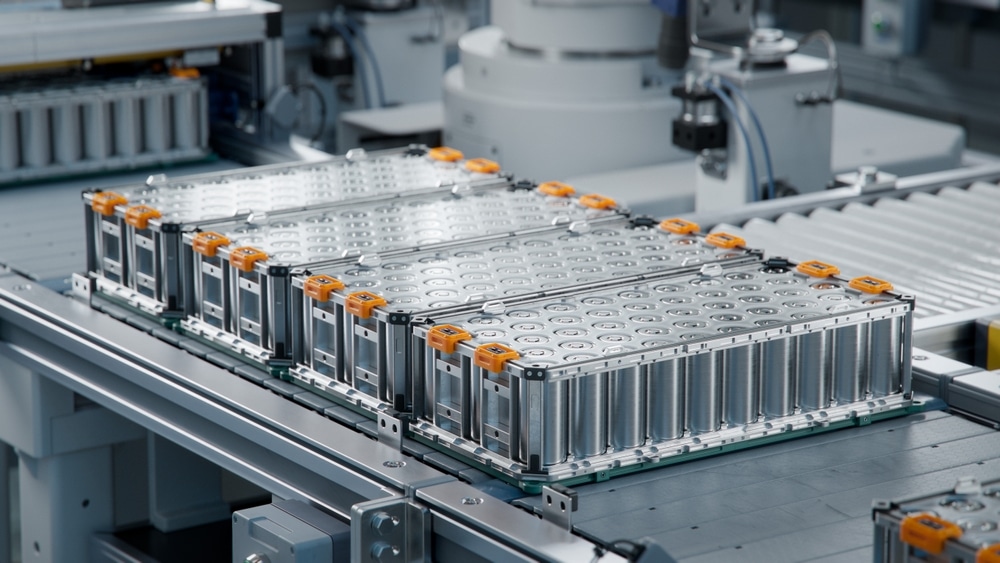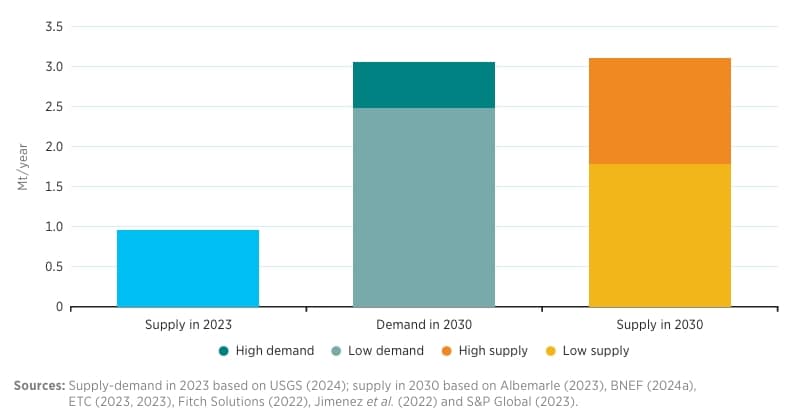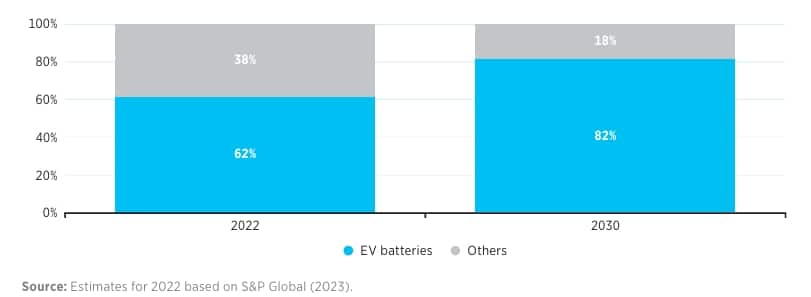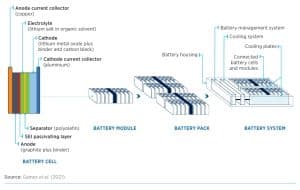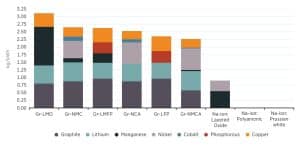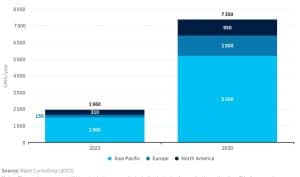Disseminated on behalf of Li-FT Power Ltd.
Lithium is an essential component in lithium-ion batteries which are mainly used in EVs and portable electronic gadgets. Often known as white gold due to its silvery hue, it is extracted from spodumene and brine ores. After mining it is processed into:
- Lithium carbonate is commonly used in lithium iron phosphate (LFP) batteries for electric vehicles (EVs) and energy storage.
- Lithium hydroxide, which powers high-performance nickel manganese cobalt oxide (NMC) batteries.
Diversifying Lithium Supply
According to IRENA’s 2024 edition of the Critical Minerals Report, last year global lithium production reached 0.96 million metric tons (Mt) of lithium carbonate equivalent (LCE) which could suffice short- to medium-term demand. But beyond 2030, recycling will play a crucial role in lithium supply, with 0.4 Mt of LCE expected to be available annually by 2035.
Lithium supply and demand in 2023 and 2030
The report says that at present lithium mining is highly concentrated, with over 90% sourced from Australia, Chile, and China. This has also led to global supply chain vulnerabilities.
However, efforts to diversify production are underway, with countries like the Democratic Republic of Congo, Germany, Ghana, and Portugal increasing their investments in lithium exploration. These initiatives could help reduce dependence on a few dominant suppliers and spread mining activities across the globe.
What’s Driving Lithium Demand?
Even though we have reported earlier, the answer remains the same. It is the EV market that’s primarily driving lithium demand. It’s projected to form 82% of total demand by 2030 which is a significant increase from 62% in 2022.
Other applications, such as energy storage systems, electronics, and industrial uses, are expected to contribute between 0.43 and 0.60 Mt of demand annually by 2030.
Meeting this growing demand will require a mining expansion, diversified supply chains, and robust recycling systems to ensure a steady and sustainable lithium supply for the future.
Lithium demand from EV batteries and other applications, 2022 and 203
Li-FT Power: Exploring & Developing Hard Rock Lithium Deposits In Canada
Li-FT Power Ltd. (TSXV: LIFT) recently announced its first-ever National Instrument 43-101 (NI 43-101) compliant mineral resource estimate (MRE) for the Yellowknife Lithium Project (YLP), located in the Northwest Territories, Canada.
An Initial Mineral Resource of 50.4 Million Tonnes at Yellowknife.
This maiden estimate is a major milestone for the company and marks a significant step forward in the project’s development. Li-FT Power’s upcoming mineral resource is expected to further solidify Yellowknife as one of North America’s largest hardrock lithium resources.
Click to learn more about lithium and Li-FT Power Ltd. >>
________________________________________________________________________
EV Battery Production Set to Triple by 2030
- Lithium-ion battery production is expected to be 3X by 2030, increasing from 2,000 GWh/year in 2023 to 7,300 GWh/year.
- This growth will meet the EV battery demand of 4,300 GWh/year by 2030 under a 1.5°C climate scenario.
This projected growth includes operational factories, construction projects, and announced plans. However, some projects are still waiting for finalizing investments. These batteries won’t just power EVs; they’ll also support rising demand from energy storage systems and portable electronics.
As EV sales accelerate, the demand for EV batteries is increasing rapidly. Passenger cars and trucks are driving most of this demand due to their high sales volumes and the large battery sizes required for trucks. EV battery demand is expected to exceed 4,300 GWh annually by 2030, representing a five-fold increase compared to 2023.
In addition to EVs, other sectors like battery energy storage systems (BESS) are also increasing battery demand. BESS demand is projected to grow six-fold between 2023 and 2030, but EV batteries will account for nearly ten times more demand by the decade’s end.
What Makes Up an EV Battery?
An EV battery is a pack of battery cells stacked together, comprising the following components:
- Anode: Typically made of graphite.
- Cathode: Often composed of lithium metal oxides.
- Electrolyte: A liquid or solid lithium salt.
These components work together to move lithium ions during charging and discharging. This process enables energy storage and release, powering the vehicle.
Battery system components and internal components of a battery cell
EV Battery Chemistries: A Closer Look
The cathode and anode represent most of the critical materials in an EV battery. Cathode types vary and include, Nickel Manganese Cobalt Oxides (NMC), Nickel Cobalt Aluminum Oxides (NCA), Nickel Manganese Cobalt Aluminum Oxide (NMCA), Lithium Iron Phosphate (LFP), and Lithium Manganese Iron Phosphate (LMFP). All these chemistries rely on lithium, but their compositions differ.
Now speaking of EV battery anode, pure graphite is the most widely used material. EV batteries typically use a mix of natural and synthetic graphite. The ratio depends on the cost, performance needs, and battery type.
Copper is another key material in EV anodes. Copper foils act as current collectors, playing a vital role in the battery’s operation.
These variations impact the choice of materials, cost, and environmental footprint and fuel the demand for critical minerals in the EV battery industry.
Estimated average critical material composition of selected EV battery packs
Asia-Pacific Leads in EV Battery Production
The Asia-Pacific region currently dominates global battery production, holding about 75% of capacity. By 2030, this share is expected to dip slightly to 70%, as other regions ramp up production. Europe is projected to see the fastest growth, with a 10X increase in capacity between 2023 and 2030.
This rapid expansion highlights the global push to support EVs and other technologies, ensuring the world moves closer to a cleaner energy future.
Regional lithium-ion battery manufacturing capacity in 2023 and planned capacity for 2030
Source: Data and Visuals from IRENA: Critical materials: Batteries for electric vehicles

